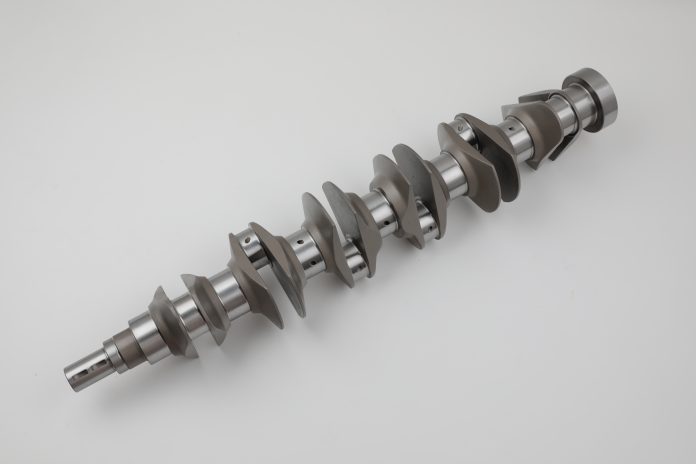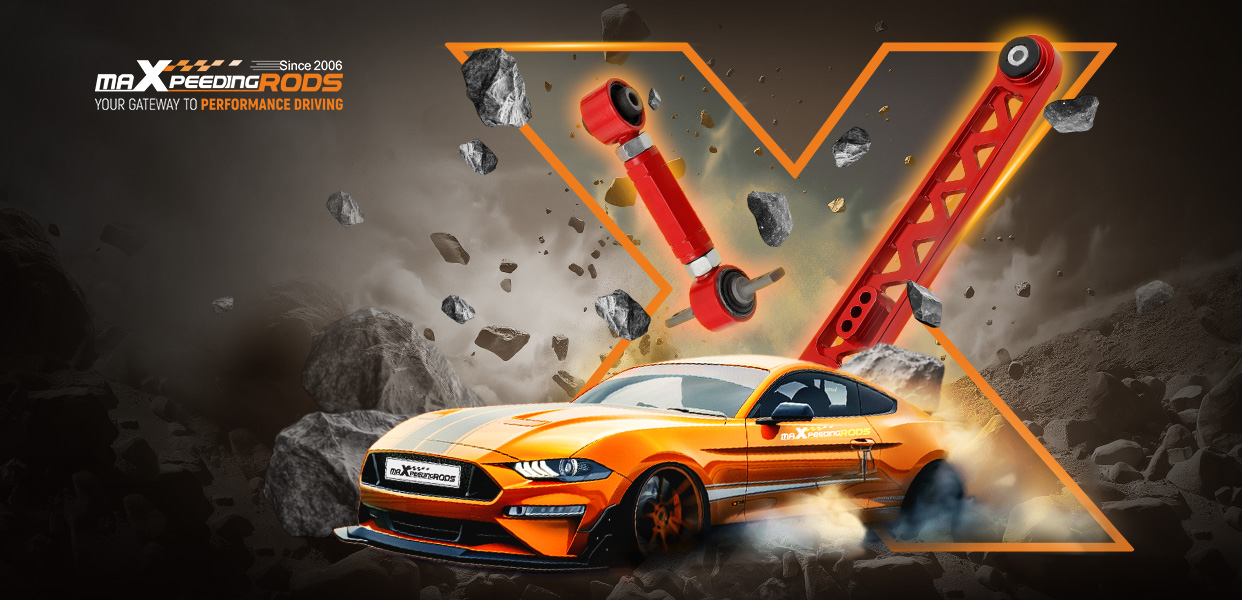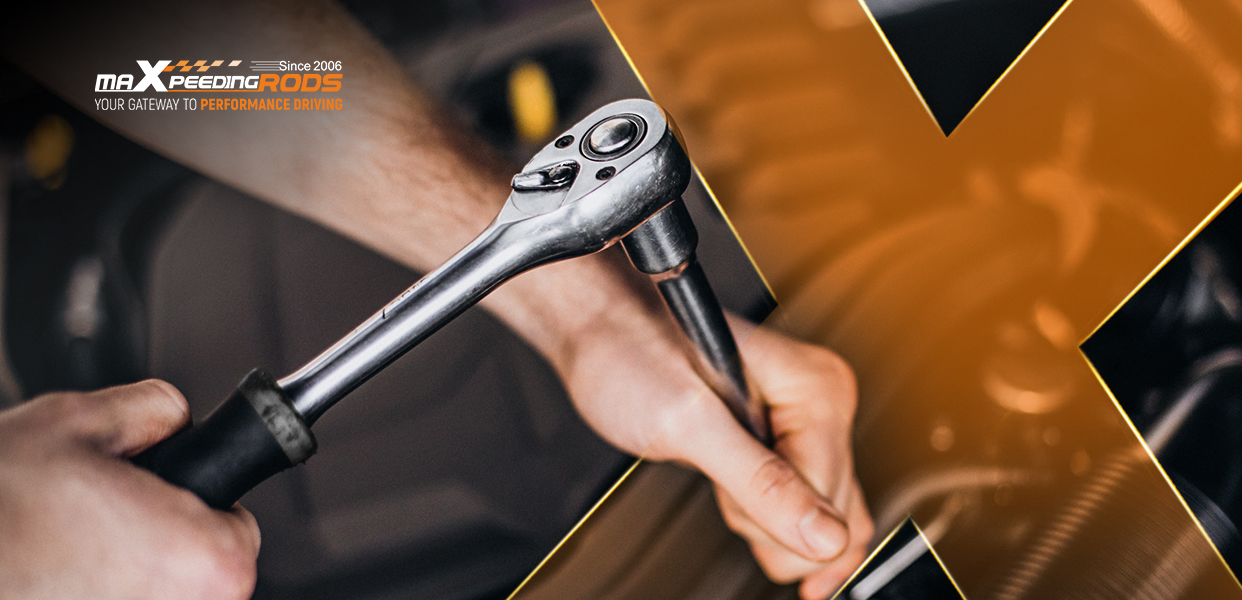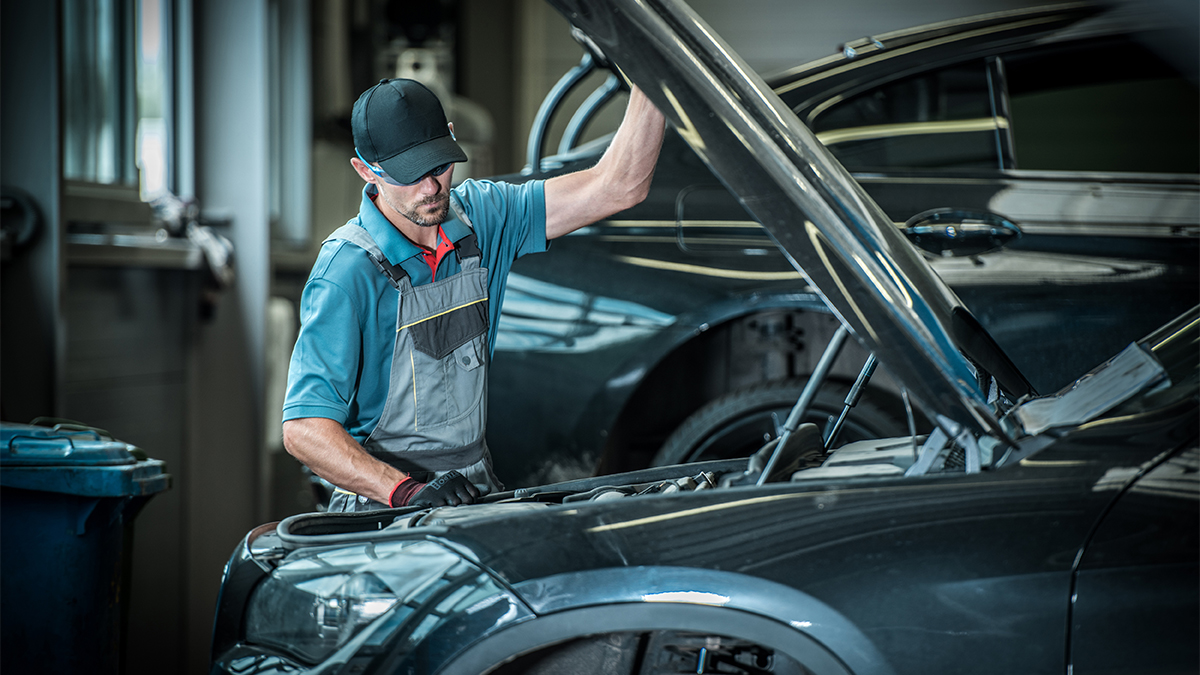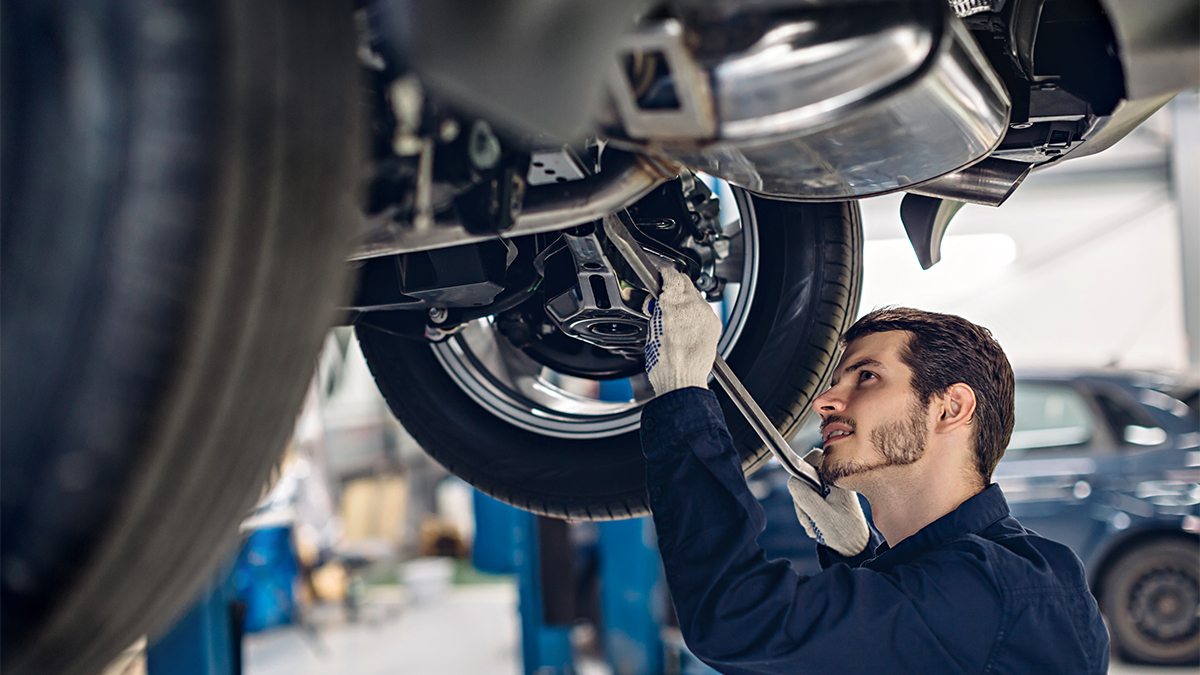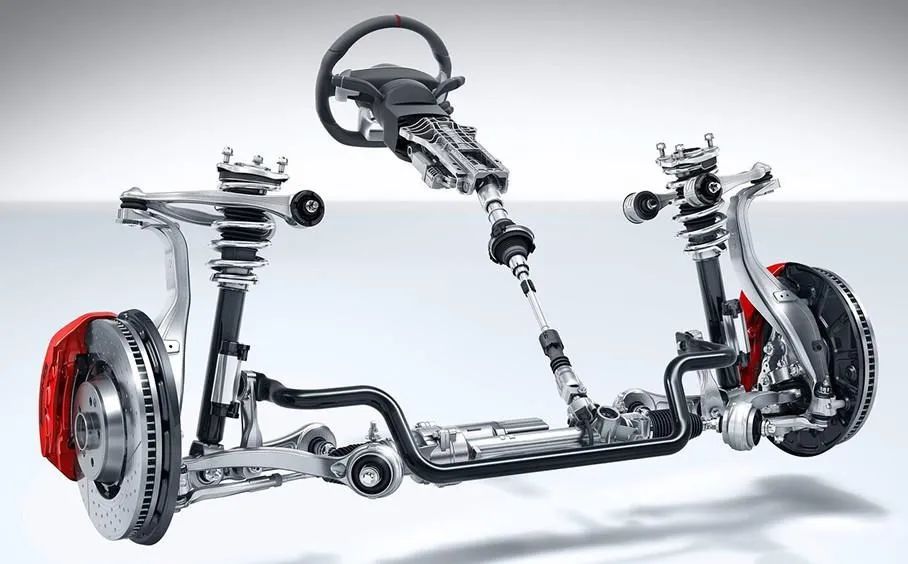WHAT IS A CRANKSHAFT?
A crankshaft is a fundamental feature in a vehicle’s engine. It is the system that converts linear energy into rotational energy. This enables the wheels to drive the car forward. All the pistons in the engine are attached to the crank which is also connected to the flywheel. The crankshaft pulley is attached to the nose of the crankshaft and is used to drive components such as the alternator, AC or supercharger.

HOW DOES A CRANKSHAFT WORK?
Fundamentally, the crankshaft performs a simple task: translate the up and down motion of the pistons into the rotation. It’s doing the same job as the crank arm of a bicycle, which turns the more-or-less up and down motion of your legs into the rotation.
The crank moves the pistons up and down inside the cylinders. The range of movement of the pistons is dictated by the crank, or more precisely the stroke of the crankshaft. The crankshaft works in unison with the camshaft, whose main task is to open and close the engine’s valves. Whenever the crank rotates, the camshaft must also rotate along with it. This is because the two components are linked together. This ensures that the camshaft opens and closes the valves at the correct time in relation to the position of the piston inside its bore. This ensures optimal combustion or power and efficiency for the engine. Combustion exerts pressure on the piston pushing it down the bore, which rotates the crankshaft pushing other pistons upward, all of which happens thousands of times per minute. The rotation of the crankshaft is transferred through the flywheel into your transmission, and through the gears of the transmission to your wheels.
HOW TO BUY A CRANKSHAFT?
Buying a crankshaft depends on whether you’re rebuilding your engine in stock form or if you’re upgrading its internals. Buying the correct crankshaft can be very easy by simply knowing your vehicles’ make, model and VIN number. With this information, you can find the correct OEM number of your crankshaft and order a replacement. OEM crankshafts are either cast or forged. Forged crankshafts are a stronger and superior choice, but the best choice for crankshafts are billet crankshafts, which are machined out of a single, large chunk of metal to achieve the ultimate strength, finish and metal grain flow. If you are interested in upgrading your engine or simply ensuring its longevity with extremely strong engine block internals, then a billet crankshaft is the best choice. You can contact one of our car specialists through our MaXpeedingRods website for further assistance in purchasing your crankshaft parts.
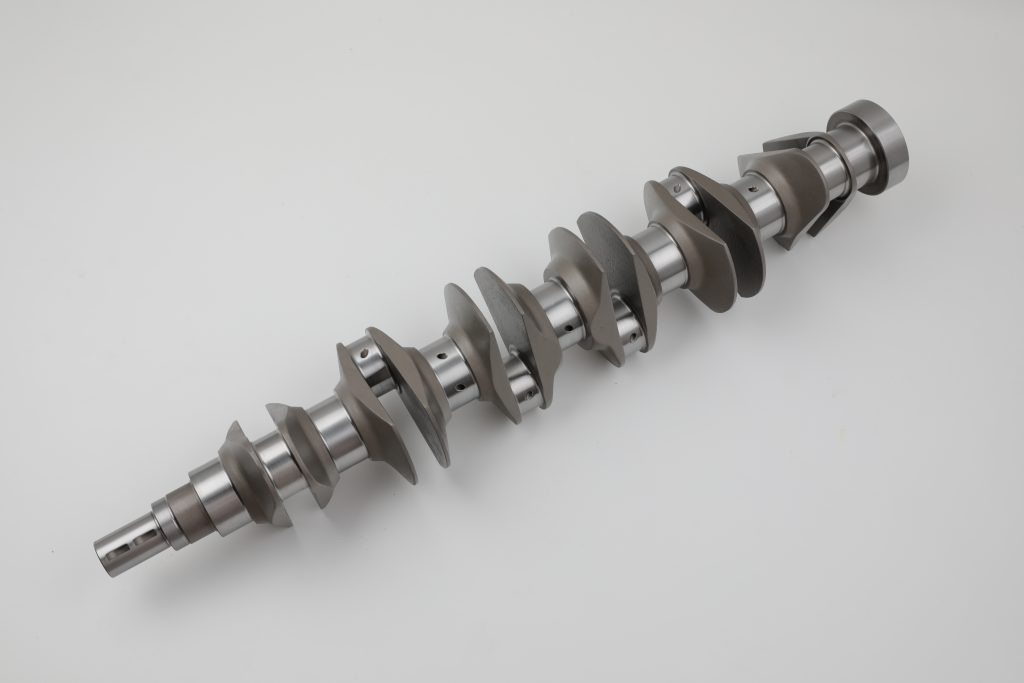
WHY BUY A CRANKSHAFT AT MAXPEEDINGRODS?
MaXpeedingRods offers a wide selection of crankshafts of popular engine platforms.
All MaXpeedingRods crankshafts are billet cranks which have been high-precision CNC machined and carefully checked and measured to ensure accuracy and proper fitment and operation
MaXpeedingRods crankshafts employ high-quality materials to ensure high strength and are quality controlled to guarantee they are without any faults.
MaXpeedingRods offers a seamless online shopping experience and the streamlined e-commerce interface makes it easy for you to find just the crankshaft you want.
Features:
• Increase crankshaft strength up to 200%
• Pure high strength anti-wear 4340 aerospace steel
• Minimum heat treatment deformation
• High strength abrasion resistance and corrosion resistance
• Uniform distribution of strength
• withstand up to 1000BHP
• Professional deep nitrogen treatment
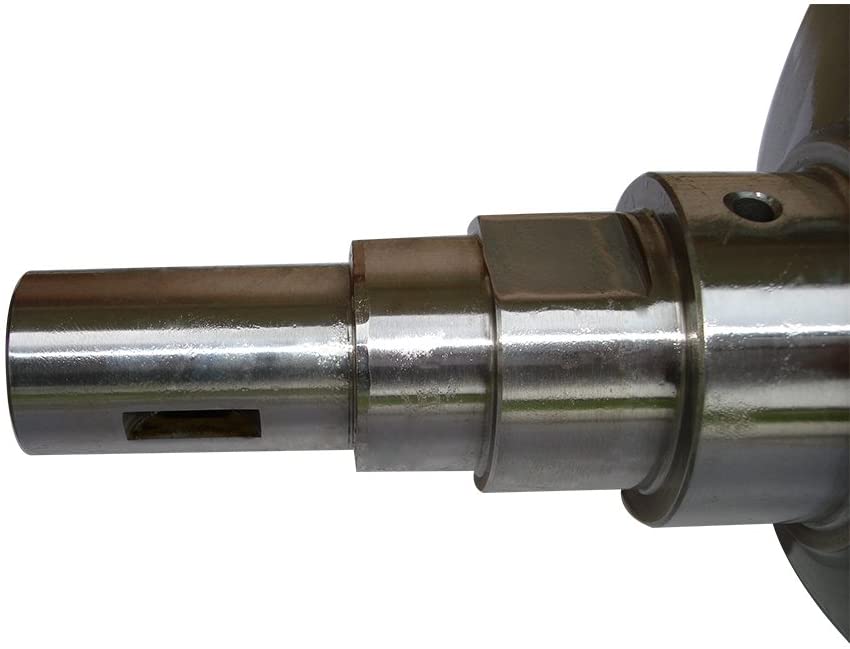
HOW TO INSTALL A CRANKSHAFT?
The crankshaft is the heart of every engine, which means replacement isn’t easy or quick. Replacing a crankshaft is usually a part of a complete engine overhaul and can only be done properly when the engine is out of the car, which means you need to plan ahead as your vehicle will be off the road for a few days or even weeks depending on the extent of the overhaul.
Removing the Crankshaft
Step 1: Mount the engine block on an engine stand for support or set it on a workbench.
Step 2: Inspect the main bearing caps. They should be numbered consecutively, starting at the front of the engine. Arrows on the caps should point to the front of the engine as well. If necessary, use a stamping die set to identify each cap so you can replace them in their exact location and position.
Step 3: Rotate alternately each bearing cap bolt a 1/4-turn counterclockwise starting at the center of the block and working toward the front and rear until you can remove the bolts by hand. Use a breaker bar and a short socket, and keep the bolts organized so you can replace them in their original location during the reassembling process.
Step 4: Remove the main bearing caps from the block. If necessary, gently tap each cap with the wooden handle of a hammer to dislodge them from the block. Keep each main bearing attached to the inside of the caps when you remove them.
Step 5: Lift the crankshaft off the engine block with an assistant’s help and set the crankshaft in a safe place standing in an upright position. This will prevent the crankshaft weights from weighing down on the unit’s centerline. Replace the bearing caps in their original location on the engine block and install the bolts finger-tight in their respective place.
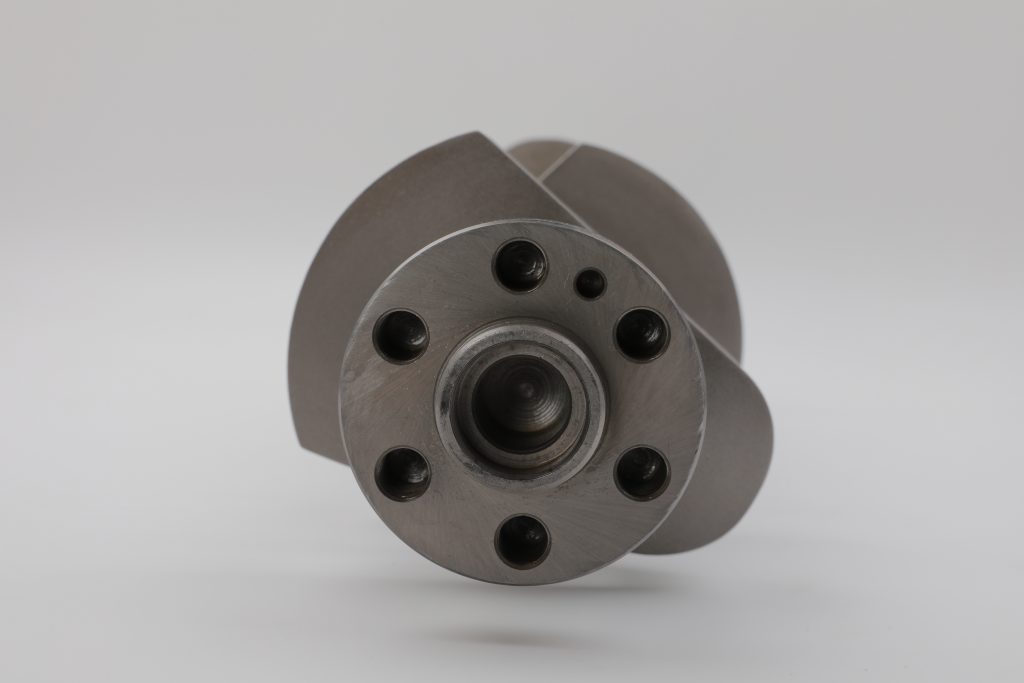
Installing the New Crankshaft
Step 1: Take the engine block and crankshaft to a machine shop for cleaning, inspection, and if necessary, reconditioning. Ask them to check for crankshaft end play and provide you with the correct bearings’ size. And remember to store the crankshaft in an upright position until you are ready to reassemble it.
Step2: Mount the engine block on the engine stand or set it on a workbench.
Step 3: Install the new bearings on the engine block with the small bearing tab seating properly on the recess provided on the block saddle. Make sure the small oil hole in each bearing aligns with the oil hole in its respective saddle. Remember that the center bearing is built with flanges on each side to control end play.
Step 4: Coat with a thin layer of moly-base grease the faces of the new main bearings you installed on the engine. Coat the crankshaft journals as well. The journals are the area on the crankshaft where the bearings will be resting on.
Step 5: Lay the crankshaft carefully on the engine block with the help of an assistant.
Step 6: Install the other half of the new bearings on the main bearing caps. Also, align the bearing tabs with the recess provided on the cap saddle and coat the bearing faces with a thin layer of moly-base grease.
Step 7: Install the bearing caps in their correct places on the engine block. Make sure the numbers on the caps run consecutively from the front to the rear of the engine and the arrows on the caps point to the front of the engine.
Step 8: Install the bearing-caps mounting bolts finger-tight. Tighten the bolts snugly using the breaker bar and short socket. Finally, torque the bolts alternately in three steps starting at the center and working your way to the front and rear of the engine. Use a torque wrench and a short socket. Consult your particular vehicle service manual for the correct torque to apply to the main bearing caps. Or you may ask the technician in your machine shop for this number.
Step 9: Tap the crankshaft ends forward and backward 10 times with a brass hammer and retorque the main bearing caps with the torque wrench and the short socket.
Install the crankshaft pulley bolt at the front of the crankshaft finger-tight and rotate the crankshaft several times to check for binding. Use the breaker bar and a socket.
